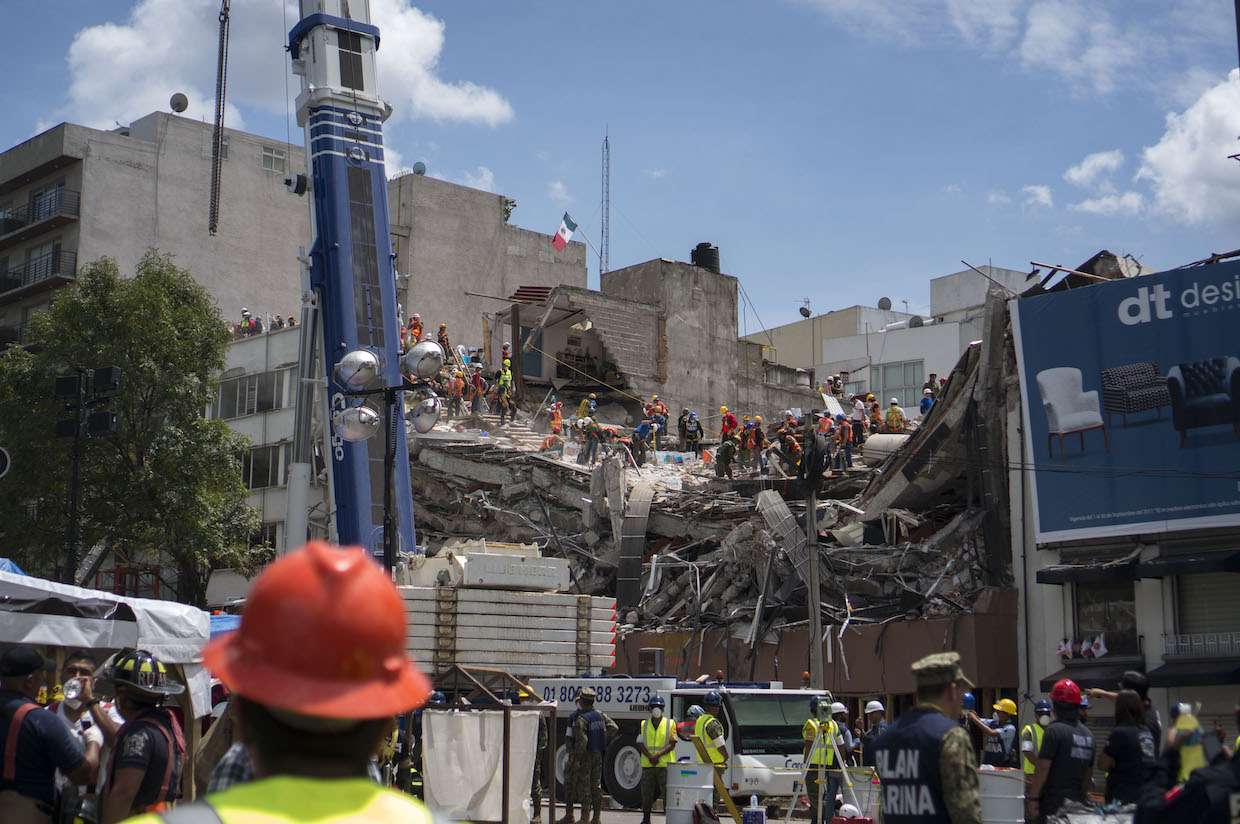By IEEE SPECTRUM
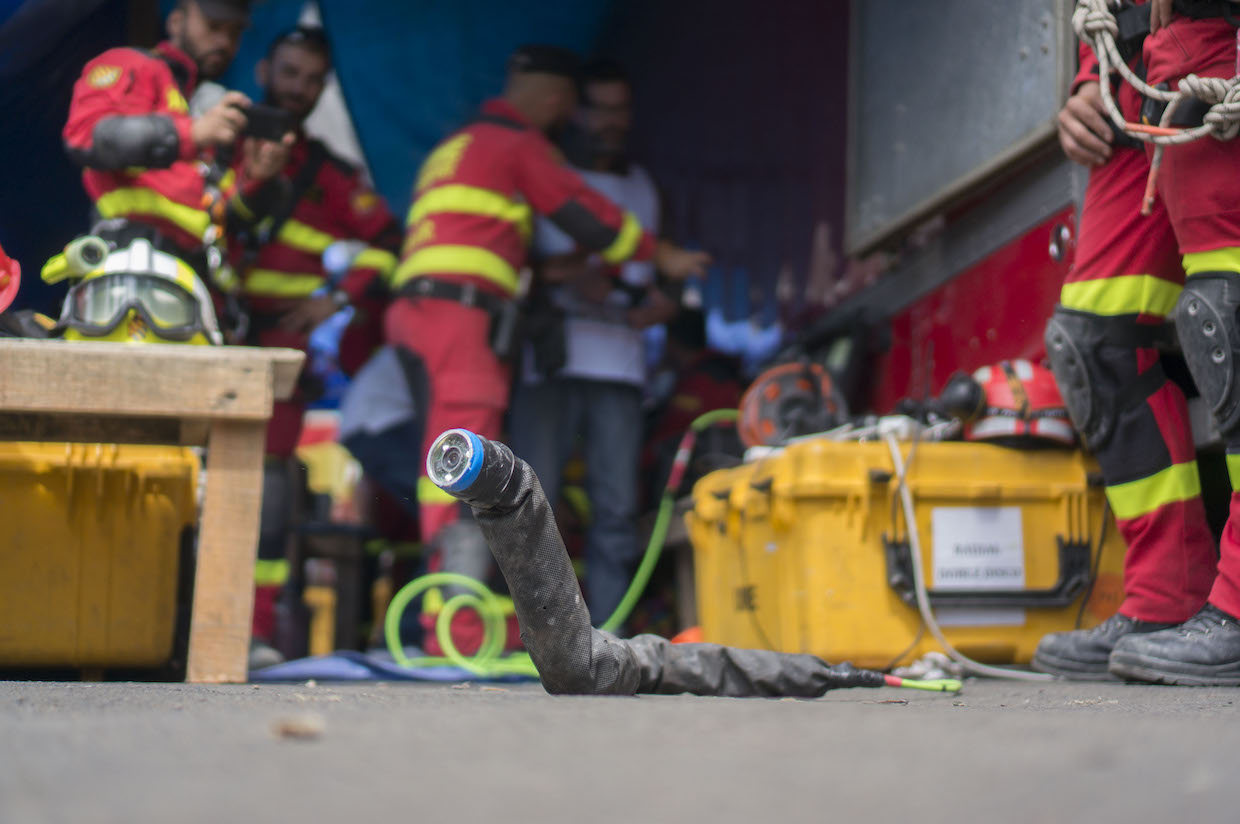
Photo: CMU
Days after a 7.1-magnitude earthquake struck Mexico City, CMU sent its snake robots in to look for survivors.
A few days after a 7.1-magnitude earthquake struck Mexico City last month, Carnegie Mellon University roboticists were contacted to see if their snake robots could help with search-and-rescue efforts. Mexican rescuers were still trying find people in the rubble of collapsed buildings, and even though several days had passed, they thought it’d be worth trying to bring in the snakebots. Within 24 hours, a team of CMU roboticists had packed their gear and headed out to the disaster site.
We spoke with Matt Travers, who was on the ground in Mexico City operating the robots, along with Howie Choset, who heads CMU’s Biorobotics Lab where the snake robots are developed, about their experience with using robots in a real disaster and how, although no survivors were found during the rescue missions they assisted with, they learned an enormous amount being on-site.
IEEE Spectrum: Were you and your robots ready for a real disaster?
Howie Choset: Since the beginning of my adventure into snake robots, I’ve been interested in search and rescue. These robots can provide rescue workers with a tool that will allow them to extend their reach into difficult and fragile situations so that they can see things that they otherwise couldn’t with conventional tools or their own eyes.
I’ve been fortunate enough to do some search and rescue training with Robin Murphy at Texas A&M, but nothing prepares you for the real world.
What were things like when you got to Mexico?
Matt Travers: Our robots are pretty mobile. We have an excellent staff and a bunch of students who maintain the robot. Within 24 hours, we were able to pack the robots up and head to Mexico City. Our “handlers” [from the Mexican Red Cross] took us directly to their central command, where a lot of the international rescue teams were camping. We tried to go get into a site immediately, but it was difficult: A lot of people want to help, but it’s a dangerous situation, and having a lot of people around is not safe at all, and we couldn’t get to a site the very first night.
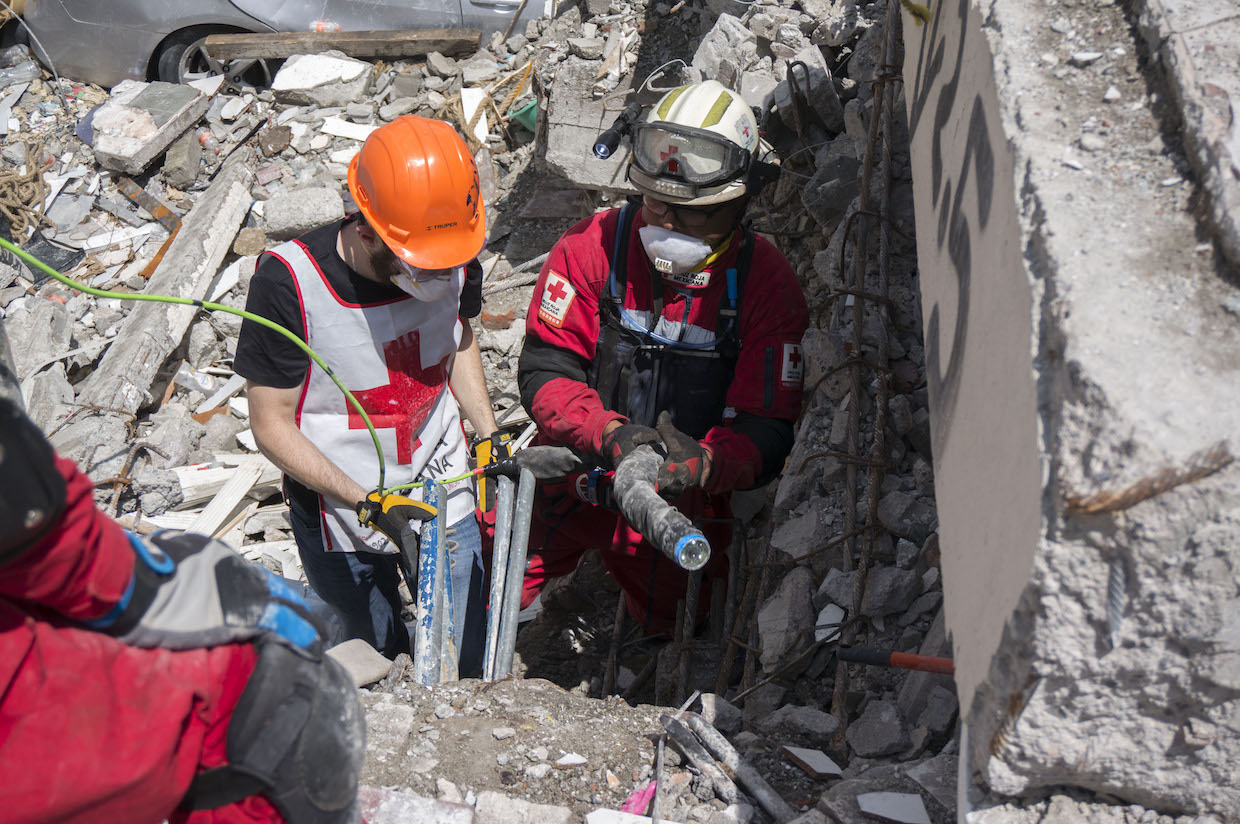
Photo: CMU
Mexican Red Cross worker holds the snake robot in preparation for a search mission at a collapsed building.
Did you have trouble convincing people that the robots you brought could be helpful, as opposed to just a research project?
Travers: We showed the Red Cross workers what the robot was capable of when we first got there, but the difficulty wasn’t in convincing people that the robot could be useful—it was difficult for anyone to get to the sites, no matter what their technology or specialization was.
When were you able to use the robot?
Travers: On Friday morning, when the Mexican Red Cross workers got their turn and went up on a building, they brought us with them. In their eyes, it was just another tool. The primary tool that they used to search for people in collapsed building was basically a big steel plunger: They’d use it to bang on concrete, and then listen for survivors with high powered microphones.
We have a camera on the front of the snake, which we thought would add the most utility to the robot. When we went down on one of these sites, we started to see that the main tools that people would use are dogs and microphones: Smell and sound travel through concrete much better than light does. It makes sense once you’re witnessing it, but otherwise it might not be something that would be immediately apparent.
That Friday during the day was the only time we had the robots in a structure. To put this in perspective, we were with the same team of Red Cross workers all day Friday, all day Saturday, and all day Sunday, and they only brought out their plungers and microphones twice, while the robot was used once.
I think in general, the rescue workers were actually impressed. At that point, we were using it around large pancaked slabs of concrete, and it was interesting that they immediately identified the places where they wanted to use the robot after watching it move for a couple of minutes.
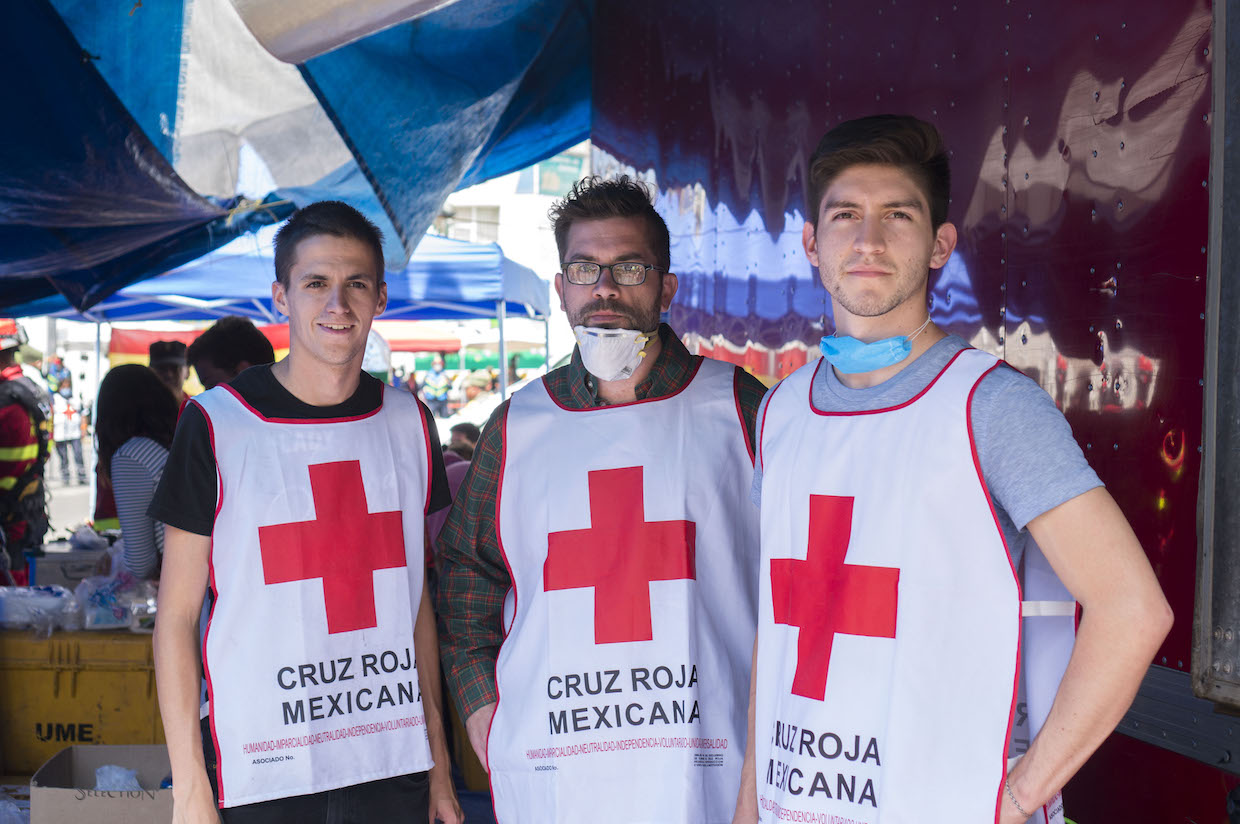
Credit
The CMU team in Mexico City [left to right]: Nico Zevallos, artist-in-residence; Matt Travers, systems scientist; and Julian Whitman, Ph.D. student in robotics.
Travers: The current state of the art when it comes to getting a camera into a collapsed building further than your arm can reach is literally a camera on a stick. If you had to go around a bend to be able to see, there isn’t another technology that currently exists that’s capable of doing that. That was one of the more eye-opening things for me—I work with the robot every day; I know what it’s good at, and I know what its limitations are. I didn’t think we were going to go down there and change what was going on. But it was interesting to see how much better our system performed next to the closest system in their toolbox, which was the camera on the stick. In its current form, this robot would be another tool in that toolbox.
I think moving forward, our interest is in producing a robot that dramatically extends the capabilities that we bring to the table. Adding sensors like microphones and speakers were the biggest requests that we got. Being able to get a microphone farther into a structure to listen locally would be a very high priority.
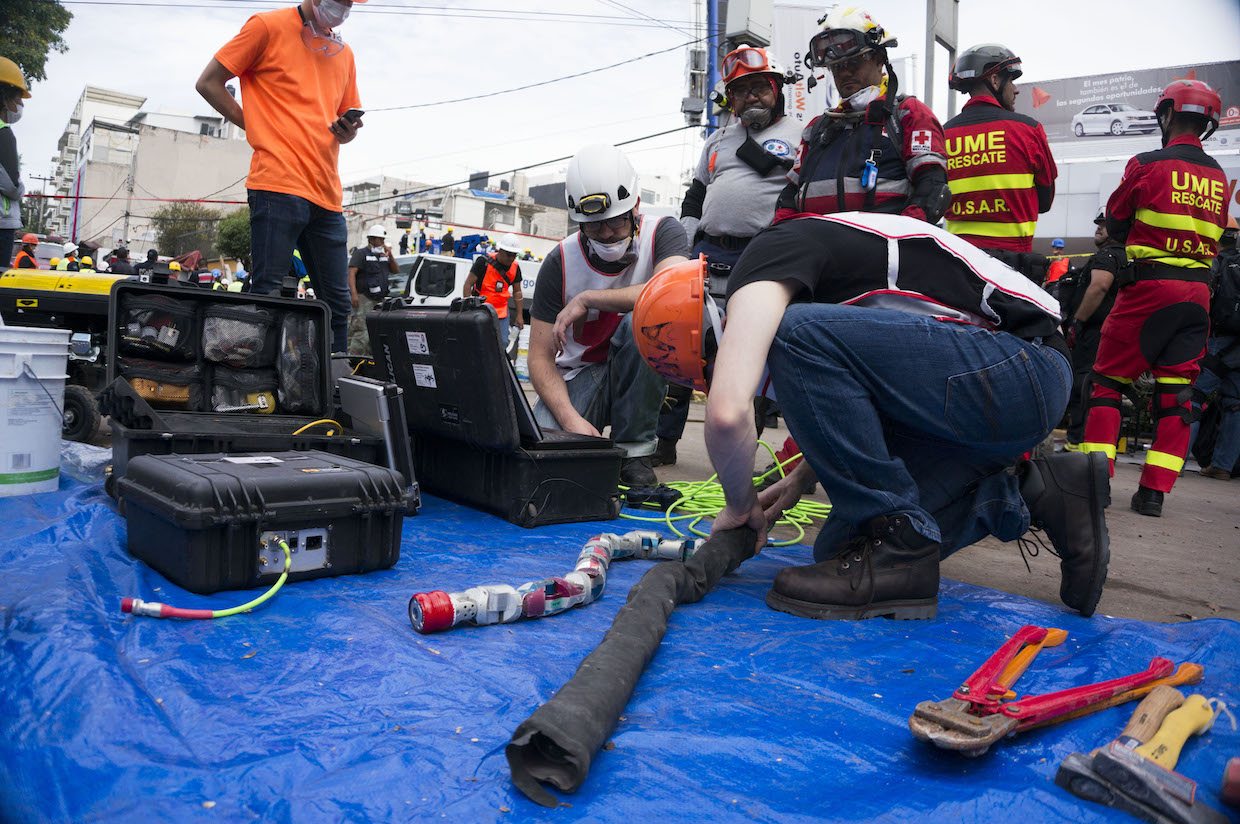
Photo: CMU
The CMU team prepares their snake robot for a search mission.
Do you think that snake robots specifically are the best robotic solution for environments like this?
Choset: What makes this snake robot unique is that it has a small cross-sectional diameter. It has the benefit of being small, but the potential locomotive capabilities of much larger robots, making it versatile. If you’re in a big open space, get a PackBot or a dog or a quadrotor. But if you have to go into a tight space, then a snake robot is your only option.
What’s next?
Choset: Where we’re at now is, we’re trying to ask ourselves what we can learn from this experience, and what can we do to better prepare ourselves for future disasters.
We’re talking with our colleagues in the hopes of finding some support for our robot. It’s been in a lot of places—Egypt and Turkey doing archaeology, a nuclear power plant in Austria, and this year it was on the Tonight Show. We’re very proud of this robot, but it’s also (no pun intended) on its last legs. We’re also trying to get ourselves put on a list so that we could be thought of a lot sooner if there’s a need for our robot, and an opportunity to serve.
[ CMU ]
Learn More
Mexico City matt travers earthquake rescue robots cmu search and rescue snake robots howie choset Mexico
